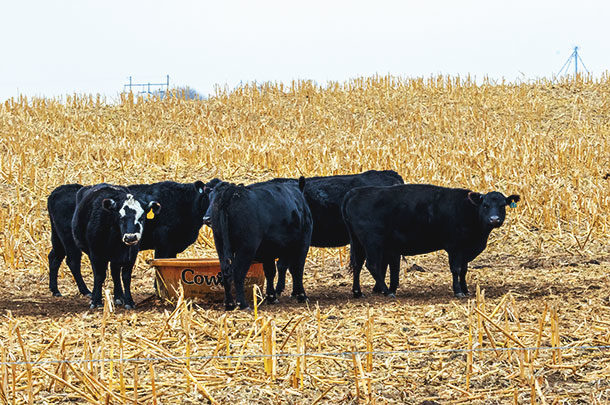Rotational grazing
Rotational grazing is one way we can make the growing season longer than the grazing season. Simply giving the forages a chance to rest and recover will allow them to grow sooner in the spring and grow longer into the fall. If over half the plant is removed, root growth will stop, resulting in slower regrowth and a weaker plant. In addition, maintaining sufficient cover over the soil will allow more moisture to be captured in periods of heavy rain, especially on hilly ground, providing more growth, especially in the summer months.
Stockpiling
Next, can we do other things to make the grazing longer than the growing season? I would argue the next easiest thing to do is to stockpile forages. For those with cool-season grass-based pastures and hay fields, stockpiling in the late summer for grazing later on in the fall and even winter is a no-cost to low-cost option.
The addition of 50 pounds of nitrogen can increase yields over 1,000 to 2,000 pounds per acre and bump up crude protein of the grass. I even keep one stockpiled paddock back until March so my spring-calving cows have a nice mud-free field to calve on. Even though the grass has not been grazed or mowed since August, I can see body conditions improve on the cows.
Crop residue
If you raise corn or have access to cornfields, grazing fields after they have been harvested is one way to extend the grazing season. This source is best if used within the first 30 to 60 days after harvest. According to Rick Rasby, University of Nebraska beef specialist, for every bushel of corn, there are about 45 pounds of residue on a dry matter basis. In addition to plant residue, there is about 1 bushel of grain lost per acre during the harvest process. Animals typically start with the lost grain, then leaves, husks and, finally, cobs and stalks.
Cereal grains
There are several other options available to extend the grazing season into the fall and winter. Cereal grains such as wheat and rye can provide forages later in the fall and in the spring. Oats can be a great option when planted after early August. With the days getting shorter, they will not produce seeds and stay vegetative but will lose quality faster in the winter than wheat or cereal rye.
Adding brassicas
Brassicas such as turnips can be planted later in the summer (I try to plant in late July in southeast Ohio) and can provide up to 5 tons of dry matter in as little as 90 days. In trials conducted back in the ’90s, the tops maintained quality down to 200ºF and bulbs down to 150ºF. However, when planted with cereal grains, they appeared to be able to withstand colder temperatures.
Mixing it up
This brings me to my next point. When considering planting crops to extend the grazing season, consider mixing and matching crops. I have seen success growing turnips and cereal grains together, and growing cereal rye and oats together. I have also seen cereal grain and turnip seed flown on cornfields prior to harvest, resulting in a mixture of turnips, cereal rye and corn residue, making an excellent mix of available forages to graze.
Adding warm-season grasses
Finally, are there some other things we can grow that can help? A portion of the pastures in warm-season perennial grass can provide valuable forages, especially during periods of hot, dry weather. This can also provide an opportunity to stockpile cool-season grasses for grazing later on.
Warm-season annuals are also an option for grazing during the summer. Corn, sorghum/sudangrass and millet are examples of summer annual crops that can be grazed.
Planning for nutritional needs
We need to make sure we balance the nutritional needs of the animals with the available forages to graze. Brassicas can be high in protein but low in fiber. Cornstalks may work best for non-lactating mid-gestation beef cows. Stockpiled grasses can lose protein and minerals later in the winter, and animals may need additional energy.
Now is a great time to plan activities to make the grazing season longer than the growing season, especially if stored forages such as hay will be in tight supply this winter. ![]()

-
Chris Penrose
- Associate Professor and Extension Educator
- Ohio State University
- Email Chris Penrose
PHOTO: Grazing crop residue is one option to extend the grazing season. Photo by Mike Dixon.









